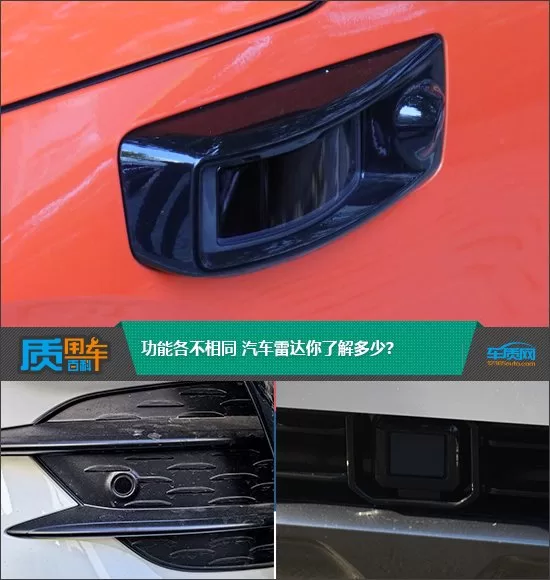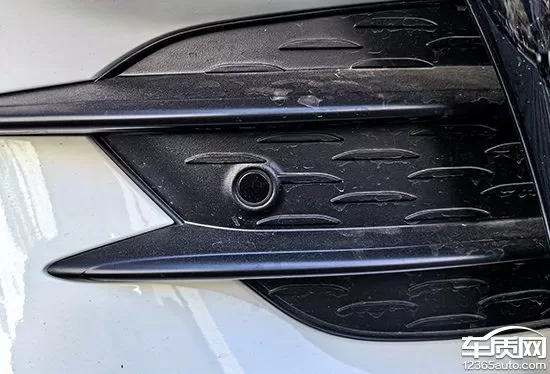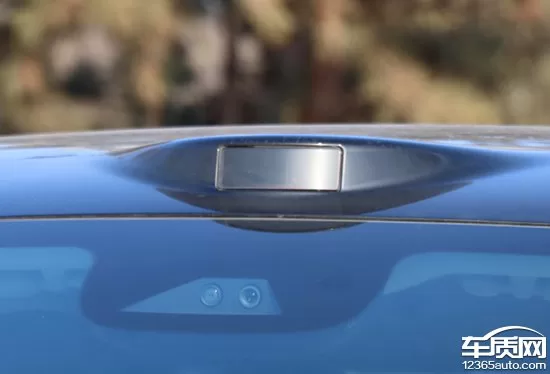With the development of technology, today’s cars are becoming more and more intelligent, equipped with more and more sensors, especially radar systems related to assisted driving. In order to adapt to different usage scenarios and functional requirements, car radar is divided into many types, each with its own advantages and disadvantages. Although car radar has almost become a standard configuration for cars and is used frequently in daily life, how do they work specifically and what are the differences between them? Next, based on technical principles and practical application scenarios, we will give you a comprehensive understanding of car radar. 1. What is car radar – Concept and classification
Radar, short for radio detection and ranging, uses radio waves to detect and locate targets. The basic principle is to emit electromagnetic waves, receive echoes, and obtain target information. Car radar systems meet vehicle standards and use different technologies such as ultrasonic, millimeter-wave, infrared, and laser radar for various applications. In 1917, French physicist Leon Walach proposed using ultrasonic waves for ranging. Bosch and Continental led early commercial exploration of car radar, introducing the first generation of sensors around 2000. Initially, millimeter-wave radar did not become mainstream due to technical limitations. Ultrasonic radar, with lower manufacturing costs, was synonymous with car radar for a long time, mainly used for ranging, such as parking radar. Early parking radars were placed at the rear of the car to alert of potential dangers in blind spots. With mature technology and lower hardware costs, the number of parking radars increased, distributed around the front, rear, and sides of the vehicle for wider monitoring. In addition to traditional ultrasonic radar, millimeter-wave radar, with higher accuracy and longer range, has seen rapid development in recent years, expanding functionality. In the 1970s, efforts to develop car radar using millimeter-wave technology faced challenges due to technical limitations. It was not until the 1990s, with advancements in microelectronics enabling miniaturization, that the hardware foundation for car radar technology was established. Mitsubishi and Mercedes-Benz were among the first to introduce radar-equipped production vehicles in 1995 and 1999 respectively. Mercedes-Benz’s system, named “Distronic,” is essentially an adaptive cruise control system with long-range millimeter wave radar, not short-range ultrasonic radar. The development of smart cars has directly brought millimeter wave radar into the mainstream. In 2015, the Tesla Model S officially delivered with the Autopilot system sensors, igniting the automotive market once again. The full vehicle uses 1+12+1 sensors, enhancing the role of millimeter wave radar in the automotive field. Although automotive radar can already provide rich assistance functions, traditional ultrasonic and millimeter wave radar are starting to show limitations as people pursue advanced autonomous driving. In comparison, lidar can accurately perceive three-dimensional information about the surrounding environment with centimeter-level detection accuracy. However, the drawback of lidar is its high cost, especially for early mechanical lidar systems costing tens or even hundreds of thousands, making them expensive and too large for automotive applications. Interestingly, Velodyne, originally known for audio, was the first to recognize the industry’s development and transition into a professional lidar manufacturer. They successfully launched the renowned 64-line lidar product. Google, in 2010, chose Velodyne lidar for their autonomous vehicles, providing significant advertising for the brand. As the market for autonomous vehicles equipped with lidar is promising, more and more tech giants are investing in the development of automotive lidar. Companies like Valeo, Hesai Technology, Huawei, DJI Livox, and Tuda Tong have become leading enterprises in automotive lidar. As a result, the hardware costs of automotive lidar are also significantly decreasing. 2. The working principle and pros and cons of different types of radar Ultrasonic radar.
Ultrasonic radar is a sensor that detects targets using ultrasonic waves, emitting ultrasonic waves outward through an ultrasonic emission device, and then calculating the distance by receiving the time difference of the reflected ultrasonic waves. In vehicle sensors, ultrasonic radar is one of the most common types, with a significant advantage in short distance measurement. Currently, the commonly used probe working frequencies are 40kHz, 48kHz, and 58kHz. Generally, the higher the frequency, the higher the sensitivity, but the detection angles in the horizontal and vertical directions will become smaller as the frequency increases, so parking radar generally uses a 40kHz probe. Ultrasonic radar is inexpensive, has good waterproof and dustproof effects, even a small amount of sediment will not affect the ranging, and has high accuracy in short distance detection. However, the disadvantage is obvious, the detection distance is relatively short, and the applicable range is narrow. Millimeter wave radar.
Millimeter wave radar is a sensor that detects targets using electromagnetic waves in the millimeter wave frequency band. Compared to ultrasound, millimeter waves have higher frequency and shorter wavelength. The mainstream millimeter wave radar technology is rapidly developing towards the direction of 76-81GHz frequency band, frequency modulated continuous wave, and beamforming antennas. 3D millimeter wave radar cannot identify stationary objects and lacks height information. 4D millimeter wave radar, also known as “4D millimeter wave imaging radar,” is an upgraded version of 3D millimeter wave radar. It has the ability to measure pitch angles and can analyze targets in high-dimensional data, providing richer information perception. Compared to ultrasound radar, millimeter wave radar has smaller antennas and lower power. Additionally, millimeter wave radar has advantages such as wide field of view, high resolution, long detection range, and the ability to detect stationary objects. However, due to its inability to accurately determine the stereoscopic contours of obstacles and object colors, it generally needs to be used in conjunction with a camera. Lidar
Laser is not a general term for light in a certain wavelength like infrared or ultraviolet, but light with precise color and wavelength. Compared to natural light with multiple colors and wavelengths, laser has high brightness, large energy, and good directionality. Due to cost constraints, silicon materials are used to manufacture 905nm lasers close to visible light wavelength, which is currently the industry standard. Among all radars, laser radar has the fastest propagation speed, high detection accuracy, strong stability, and accurate identification of obstacles. However, laser radar is greatly affected by weather conditions and has weak color and pattern recognition capabilities. The large amount of raw data obtained by laser radar requires complex data processing to generate usable information, resulting in large size and high power consumption. In addition, the manufacturing process and assembly difficulty of laser radar are higher compared to ultrasonic and millimeter wave radars, directly affecting its mass production and deployment capabilities. Infrared Radar Infrared radar refers to optical radar working in the infrared band, mainly used to enhance the driver’s perception of obstacles ahead, such as in vehicle night vision systems. Depending on the working principle, infrared radar sensors are divided into active and passive types. Active infrared radar is equipped with infrared light sources and receivers, allowing it to detect far obstacles on the road in low light conditions at night; passive infrared radar relies solely on an infrared receiving device to analyze the infrared signals reflected by external objects. Although structurally simpler, passive infrared radar significantly lags behind active infrared radar in terms of recognition accuracy and distance. Infrared radar sensors have a significant advantage in dim lighting conditions, but their reliance on infrared signals means they are not capable of working around the clock when there is sufficient daylight. Additionally, the effective detection range of infrared radar sensors is relatively short, leading to limited usage scenarios. Despite enhancing the driver’s perception of obstacles ahead, with the development of advanced driver assistance systems, infrared radar is gradually being phased out and becoming less common.




